The Annabelle Selldorf-designed Rubell Museum opens in emerging Miami art district
New York-based Selldorf Architects converts a series of former industrial buildings in Miami’s Allapattah neighbourhood into a museum-worthy setting for a family’s art collection, making more of it accessible to the public than ever before
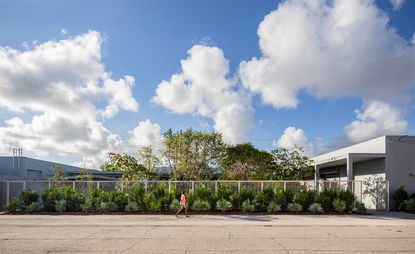
When Mera and Don Rubell began collecting in 1964, they diligently assigned a budget of $25 (a quarter of Mera’s teaching salary) each week to art. Five decades on, the genial couple have amassed an enviable collection of 7,200 works by more than one thousand artists – and counting. Together with their son Jason, the family recently opened the doors to their collection’s new home in Miami’s emerging Allapattah neighbourhood, enlisting Selldorf Architects to reimagine a disused rice storage complex as the newly minted Rubell Museum (previously known as the Rubell Family Collection).
The New York-based architecture firm gutted and transformed six warehouse units into a cohesive 100,000 sq ft campus – tripling the exhibition capacity of the collection’s previous space, a two-storey former Drug Enforcement Agency building less than a mile away in the city’s Wynwood district. The Rubell Museum now unfolds across a single level, comprising 40 galleries, a flexible events and performance space, a richly stocked research library, a bookstore, an outdoor bar and new restaurant LEKU, serving Basque cuisine.
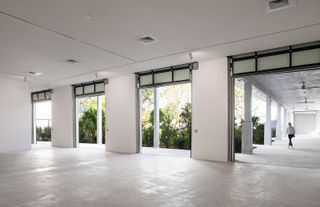
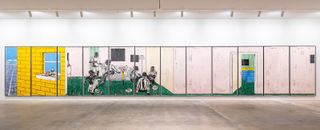
Above, view of courtyard garden. Below, art in the galleries.
Inside the museum, Annabelle Selldorf – the go-to architect for blue-chip galleries including David Zwirner and Hauser & Wirth – has largely hewed to the building’s industrial origins. The structure’s factory bones are palpable in the expansive ceilings and concrete columns, tempered by a museum-quality finish of white walls and refinished concrete floors. Hurricane-safe windows have been strategically placed in the warehouse structure to allow Miami’s abundant daylight to filter into the space, while an internal street branches off into the galleries to the west, and leads to administrative spaces to the east.
Selldorf addressed the needs of the collection with scaling galleries, to accommodate monumental works from Sterling Ruby, Keith Haring, Kehinde Wiley and more, through to installations, such as Yayoi Kusama’s Infinity Rooms, and more modestly sized pieces. At the heart of the site – where the loading dock was once located – is a leafy courtyard garden designed by La Casona Garden in collaboration with Juan Roselione-Valadez. The garden was conceived as a ‘restoration project’ using rare plants native to the Everglades and the Florida Keys.
The Rubells were instrumental in luring Art Basel to Miami Beach 18 years ago, so it’s only fitting that the influential collectors timed the opening of their new museum on 4 December during Miami Art Week. They’re in good company too: fellow Miami art power player, the philanthropist and magnate Jorge M Pérez, similarly opened his own private museum, El Espacio 23, several blocks directly west, in Allapattah. As development hots up in this swiftly changing area, we’ll be on neighbourhood watch.

The internal courtyard.

Exterior view of the Rubell Museum.

The entrance to the Rubell Museum.
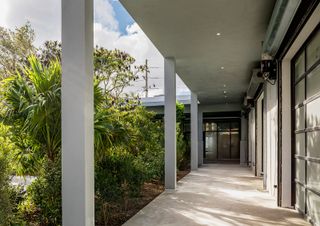
Covered walkways surrounding the garden lead visitors first to the reception desk and a restaurant.
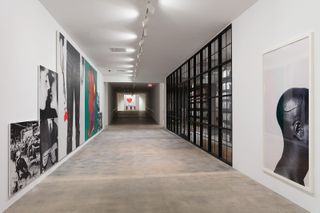
From left, Stake: Art is Food for Thought and Food Costs Money, 1985, by John Baldessari; Untitled, 1982, Keith Haring; Llano Estacado, Dallas, Texas, 1979, by Carl Andre; and Branded Head, 2003, by Hank Willis Thomas.

Pharos, 1985, and Brest, 1985, by Philip Taaffe; Slanted Playpen, 1987, by Robert Gober; Untitled, 2007, by Christopher Wool; Untitled (Sink), 1984, by Robert Gober; Heritage, 1986, by Nancy Shaver; Untitled (Golden Knots:5), 1987, by Sherrie Levine; “Untitled” (Join), 1990, by Felix Gonzalez-Torres, in conjunction with Michael Jenkins.

Das Neue, 2003, by Neo Rauch; Schauspieler, 2013, by Isa Genzken; Demos, 2004, and Vorfuehrung, 2006, by Neo Rauch.
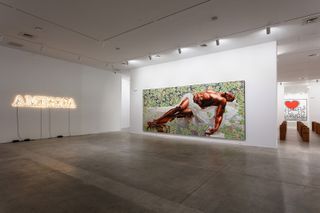
America, 2008, by Glenn Ligon; Sleep, 2008, by Kehinde Wiley; Untitled, 1982, by Keith Haring; Llano Estacado, Dallas, Texas, 1979, by Carl Andre.

The building maintains the overall vocabulary of the original structures while updating them sensitively to serve their new public purpose.
INFORMATION
Wallpaper* Newsletter
Receive our daily digest of inspiration, escapism and design stories from around the world direct to your inbox.
-
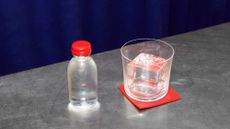 London bar Bauhaus Warehaus is a factory by day, drinking den by night
London bar Bauhaus Warehaus is a factory by day, drinking den by nightMixologist of the moment Remy Savage shakes up the world of cocktail-making with a hardworking sibling to A Bar with Shapes for a Name, his Bauhaus-inspired bar enterprise in east London
By Neil Ridley Published
-
 Copper piping turns contemporary lighting: the twist in JamesPlumb’s designs at Gallery Fumi
Copper piping turns contemporary lighting: the twist in JamesPlumb’s designs at Gallery FumiDesign studio JamesPlumb presents sculptural copper chandeliers and floor lights in its solo exhibition 'Rooted' at Gallery Fumi (until 25 January 2025)
By Ali Morris Published
-
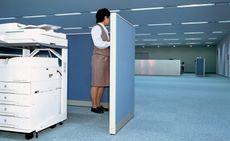 Circling back: Lars Tunbjörk's uncanny office photography is revisited in a new book
Circling back: Lars Tunbjörk's uncanny office photography is revisited in a new bookFirst published in 2001 and long since sold out, 'Office' is revisited this month by the publisher Loose Joints, released with a second volume shot in Los Angeles, the previously unpublished LA Office
By Zoe Whitfield Published
-
 Miu Miu’s Women’s Tales film series comes to life for Art Basel Paris
Miu Miu’s Women’s Tales film series comes to life for Art Basel ParisIn ‘Tales & Tellers’, interdisciplinary artist Goshka Macuga brings Miu Miu’s Women’s Tales film series for Art Basel Paris to life for the public programme
By Amah-Rose Abrams Published
-
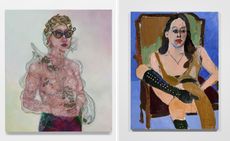 Art Basel returns to Paris: here is everything to see and do
Art Basel returns to Paris: here is everything to see and doArt Basel Paris 2024 (18 - 20 October 2024) returns, opening at the newly renovated Grand Palais
By Amah-Rose Abrams Published
-
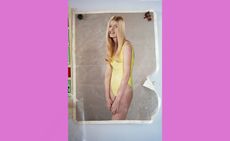 ‘Happy birthday Louise Parker II’: enter the world of Roe Ethridge
‘Happy birthday Louise Parker II’: enter the world of Roe EthridgeRoe Ethridge speaks of his concurrent Gagosian exhibitions, in Gstaad and London, touching on his fugue approach to photography, fridge doors, and his longstanding collaborator Louise Parker
By Zoe Whitfield Published
-
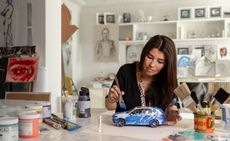 Es Devlin and BMW reveal hydrogen-fuelled collaboration at Art Basel 2024
Es Devlin and BMW reveal hydrogen-fuelled collaboration at Art Basel 2024Es Devlin and BMW celebrate the potential of hydrogen power in installations unveiled at Art Basel 2024, including a take on the BMW iX5 Hydrogen
By Hannah Silver Published
-
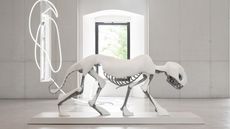 What to see at Art Basel 2024, as the fair arrives at its hometown
What to see at Art Basel 2024, as the fair arrives at its hometownArt Basel 2024, the fair of all fairs, runs 13-16 June, with 285 international exhibitors and a long list of side shows and projects
By Osman Can Yerebakan Published
-
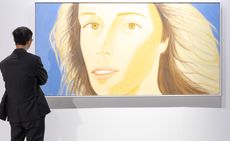 Art Basel Hong Kong 2024: what to see
Art Basel Hong Kong 2024: what to seeArt Basel Hong Kong 2024 sees the fair back bigger and better than ever. Navigate the highlights with our guide
By Lauren Ho Published
-
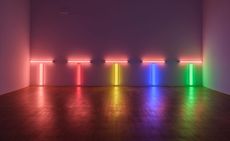 Dan Flavin’s fluorescent lights light up Basel
Dan Flavin’s fluorescent lights light up Basel‘Dedications in Lights’ celebrates Dan Flavin’s conceptual works, at Kunstmuseum Basel
By Amah-Rose Abrams Published
-
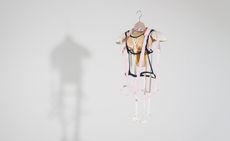 Space for My Body: Anu Põder’s retrospective opens in Switzerland
Space for My Body: Anu Põder’s retrospective opens in SwitzerlandEstonian artist Anu Põder is celebrated by Switzerland’s Muzeum Susch in an exhibition curated by Cecilia Alemani
By Hannah Silver Published